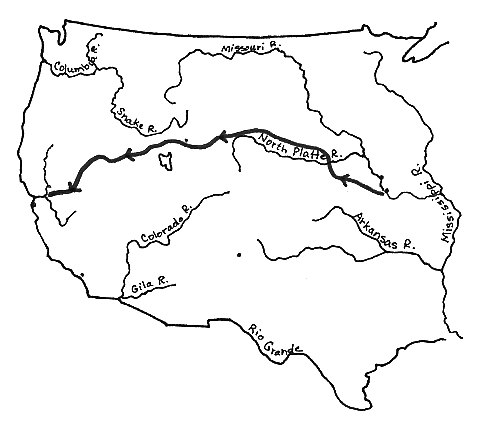| ||||
|
| ||||
|
JOHN
BIDWELL
 Lived:
1819-1900
Lived:
1819-1900
Explored California in: 1841-1849
Exploring for: United States
Explored: by land in northern and central California
Fur trappers and traders were
returning from the west to the eastern
EARLY HISTORY
John Bidwell was born in New York State in 1819. The family later moved to Ohio. At the age of 20 John went to Missouri as a schoolteacher. There he heard great things about California from Antoine Robidoux, a French fur trapper who lived in Missouri.
BACKGROUND
Robidoux talked of a land where it was always springtime, where the soil was fertile, oranges could be picked from the trees, and herds of cattle and horses roamed the hills. Robidoux said that the Mexican officials and the Indians were all friendly. Who would not want to go to such a place!
Bidwell organized a committee which became the Western Emigration Society. Many people responded to their notice about going to California. At the last moment, however, only Bidwell and one other man left Weston, Missouri. Bidwell himself had barely enough money to buy a wagon and provisions. The other man bought two oxen and a mule.
BIDWELL’S JOURNEY
Bidwell’s wagon rendezvoused with a few other wagons in Sapling Grove, Missouri. They headed west on May 19, 1841, with 69 people, including 15 women and children. There were 14 wagons pulled by horses or oxen, and four carts.
Several Catholic missionaries were part of the group, one of whom was the Jesuit priest Father Peter De Smet, on his way to establish a mission among the Flathead Indians in the northwest. The missionaries had brought with them a guide, Thomas Fitzpatrick, who had been a fur trapper in the Rocky Mountains. He was the only one of the group who had any knowledge of wilderness travel and of the Indians who lived there.
John Bartleson was elected as leader. John Bidwell was clerk, and he kept a journal with details of their journey. On June 22 the party reached Fort Laramie. They then crossed the Rockies through South Pass and a few weeks later they came to the place where the California Trail separated from the Oregon Trail. The missionaries and Tom Fitzpatrick, the guide, went towards Oregon. Bidwell and the rest of the group, 32 in all, headed for California.
Without a guide and with no experience in the wilderness, the group suffered. Crossing the dry flatlands of Nevada, they had to abandon most of their furniture and supplies, and then even the wagons. They loaded the animals with packs, but since no one knew how to make a pack secure, they kept slipping off. The group wandered for days through the desert, killing their oxen when they needed food.
Bartleson and a few other men left the group, taking the best supplies and hoping to make it to safety on their own. John Bidwell took over as leader. The men who had deserted came back in a few days. They had gotten lost on their own, and given up finding the way.
At last they began the climb into the Sierra Nevada Mountains, following the West Walker River. It was October and the snows were already heavy in this pass, near what is now Sonora Pass. On the 28th of the month they ate the last of their beef, and things looked grim. Two days later, however, they came in view of a wide valley. On November 4, 1841, they reached John Marsh’s ranch near Sacramento. The trip had taken them almost six months.
WHAT HE ACCOMPLISHED
John Bidwell had been the main force behind the first American emigrant party to enter California from the east. Not only had he organized the group back in Missouri, but he had assumed the leadership at a critical time and brought them safely across the desert and through the rough mountains. Though they were hungry and had lost most of their possessions, they had fulfilled their goal of reaching California.
Bidwell’s trip paved the way for future emigrants to come to California. His journal was published a few years later, and used as a guide by others making the trip west.
LATER YEARS
With the emigrant party safely
in California, John Bidwell left them and went to Sutter’s Fort. He worked
as a clerk for Sutter. He became a Mexican citizen and was granted a 22,000-acre
ranch at Chico, near Sacramento. When the
When gold was discovered at Sutter’s mill in 1848, thousands of people rushed to California in the hopes of getting rich. Bidwell, who was already there, was one of the few who made a fortune from gold. He found gold on the Feather River, at a place called Bidwell’s Bar. That spot was covered by water when Oroville Dam was built many years later.
With the fortune he took from the gold fields, John Bidwell became a wealthy man. He lived on his ranch where he raised sheep and poultry. He grew grapes and wheat. And he built a sawmill.
Bidwell became a leader in the new state of California. He served in the U.S. Congress from 1864-67. Three times he was a candidate for governor of California, but lost the race each time. He also ran for president of the U.S. on the Prohibition Party ticket in 1892, but lost.
Bidwell lived on his ranch the rest of his life. He died in 1900 at the age of 81.